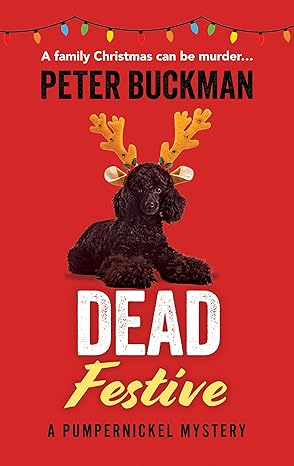Interview with Leigh Douglas
Receptionist of the United States
(ROTUS)
Interview by Louise Cannon
20th January – 7th February 2026 at Park Theatre, London

After a successful run at the Edinburgh Fringe Festival, today, I present an interview I did with writer/performer Leigh Douglas on her political satire, Receptionist of the United States, set to be staged at Park Theatre, Finsbury Park, London in February 2026. (ticket link after the interview). We talk about American politics, the conservative women behind those corridors of power, the internal journeys in those corridors, the contradictions, her views on Donald Trump and more…
Receptionist of the United States is said to be “A sharp, satirical and very funny look at the conservative women behind America’s corridors of power, ROTUS follows Chastity Quirke, a White House receptionist and staunch Republican as her blind faith in the system begins to crack and she’s forced to reckon with the consequences of her own complicity.”
Thank you very much for your time, let’s begin…
What or who inspired you to become a comedian and do political satire?
Coming from Ireland, there’s an explicit link in 20th century Irish history between art (theatre especially) and politics. My granddad lived through a lot of that history, born in 1929. He grew up with several relatives who signed with a mark as they couldn’t read or write. My granddad himself was self-educated from the age of 12 onwards and was one of the most well-read and funniest people I’ve ever known. He went on to write for the stage as well as radio, and he instilled in our whole family that literacy is power. My granddad and I were very close, and until he passed away in 2024, he would often be one of the first to read a new piece of my work. He didn’t pull punches with his criticism, even when I was a child. There is no doubt much of my love of the theatre came from him. I was at the Edinburgh Fringe doing a split-bill with my fellow comedian, Sophie Garrad, when I got the call to say he had gone into hospital. He told me not to come home; the show must go on. In terms of stand-up and comedy, I was raised on the likes of French and Saunders, Kathy Griffin, and Smack the Pony. In university, I studied Brecht and discovered The Thick of It. I knew I wanted to make work that brought together a feminine sensibility but tackled politics.
You take a funny look at the conservative women behind America’s corridors of power: what fascinates you most about them?
I’m not above aesthetics and there’s no denying that the aesthetic of American conservative women is compelling and aspirational. If you’re in any way drawn to glamour, there’s something about powerful American conservative women that will always be compelling. This is no accident. A huge part of their calculus is to fulfill some kind of patriarchal fantasy of what a woman should be. Then there’s the delicious hypocrisy of their stated goals and views, dripping in self-righteous moral superiority and privilege. It’s camp. Their gender performance is almost as studied as a drag queen persona. As a lesbian who spends quite a bit of my time stomping around London in Doc Martens, it’s enormous fun to drag up as one of these women.
Receptionist Of The United States (ROTUS) is about Chastity Quirke, who is a White House receptionist who is fiercely loyal to the Republican side and its President in a “blind” manner, who then reluctantly becomes self-aware. How do you think that feels, and how important do you feel it is to show how paths of sheer certainty can still change.
When we give up on hope for humanity, we might as well give up and go home. Everyone comes from a context, and no matter what their political beliefs might be and no matter how misinformed they are, everyone has a reason for believing what they do which is grounded in something true to the reality of their lived experience. In writing Chastity, I wanted to come to understand what circumstances might create a woman with diametrically opposed political views to my own. I could then game out where those views might lead her, not to mention what it might take for the bubble to burst for her. If Chastity Quirke is an anti-feminist Scrooge, what three ghosts might come to visit her? If the spread of right-wing fascism is going to be stopped, we have to hope that some of the foot soldiers are redeemable under the right set of circumstances. Otherwise, we’re writing off half the population forever.
How did you go about working out where the internal journey begins and how it ends?
The interesting thing in writing about complicity, culpability and political criminality is that no one in Chastity Quirke’s world is going to say exactly what they mean. Those who say the quiet part out loud will be weeded out as disloyal or set up as the fall guy. Chastity, as someone who thrives in this world, is reading between the lines all the time to work out where she stands, what exactly is being asked of her, and what chess move she should anticipate next. She begins with absolute certainty that she knows what move everyone else will make next. Her internal journey begins the first time someone makes a move she doesn’t see coming. As the show progresses and Chastity loses control, she is surprised more and more frequently by the actions of others. Her internal journey ends when the rules she’s been playing by are thrown out the window by the most powerful players and she realises she never had any control at all.
The play is partly inspired by real people. How did you research those people for the play to ensure you got their part of the story right in how they are portrayed?
Of course I went to traditional primary sources like Cassidy Hutchinson’s memoir, Enough. The way she wrote about her time in the Trump White House and her ultimate decision to testify to the January 6th investigation was the initial inspiration for much of the show. However, I then also scrolled all the way back in time on Karoline Leavitt’s Instagram to see how she was presenting herself online years before she was ever White House Press Secretary. I listened to right-wing podcasts like Sincerely American to make sure that Chastity’s vernacular and mode of expression was authentic. I also drew inspiration from the way conservative influencers present on social media and in reality TV. There is an indisputable link between the glamorization of conservative lifestyles in shows like Secret Lives of Mormon Wives, social media accounts like Ballerina Farm, and the presentation of conservative women working in the White House. It’s all promoting the same conservative values and politics.
Where do you stand on politics and President Donald Trump?
Safe to say, I think Donald Trump is a menace and I find the state of what’s happening in the United States currently demoralising, frightening and dangerous. I wrote ROTUS in January 2025 as he was being inaugurated for his second term as a way of processing my grief. The Democrats have their own problems, of course, but, in my view, they’re a right sight more compassionate, capable and compelling than the alternative we’re living through now. I was working as a barmaid in a North London pub when Alexandria Ocasio-Cortez was first elected to Congress; if she ever runs for president, she’d get my vote. To me, she’s always represented the working woman living under capitalism. I’d also love to cast a vote for Jasmine Crocket or Pete Buttigieg.
What do you feel the pressures, contradictions and moral consequences faced by young women operating within hard-line conservative politics are, and how do you use this in your show?
The contradiction at play for young women operating in conservative politics is that Republicans are the party of Christian fundamentalism. The rhetoric of the hard right is that a woman’s greatest priority should always be her role as a wife and mother. Therefore, if you’re an ambitious young woman in right-wing spaces, you have to go husband hunting in a manner befitting a Jane Austen novel in order to remain in line and on message. You have to tell other young women that having a career is a distraction, whilst you yourself pursue a demanding career. Balancing your career and having a family cannot be perceived to be a struggle. You have to portray yourself as superwoman, effortlessly fulfilling both roles perfectly. If you admit to struggling or just not wanting a family, you’ve failed as a woman.
ROTUS was highly successful at the Edinburgh Fringe, what did that feel like and what are you looking forward to most at Park Theatre?
It was incredibly meaningful to me that Chastity and the show connected with people. It was exhilarating to feel like a piece that I’d written, partly as a way of processing my own grief at seeing Kamala Harris lose the 2024 presidential election, was also an outlet for audiences. In Ireland, we have wakes when someone dies that are often some of the most riotous, most brilliant parties you’ll ever go to. Something about the experience of doing ROTUS at Edinburgh felt cathartic in a similar way.
Where can people follow you on social media?
@leighdouglascomedy
ROTUS: Receptionist of the United States is at Park Theatre from 20th January – 7th February 2026. Tickets available HERE.













